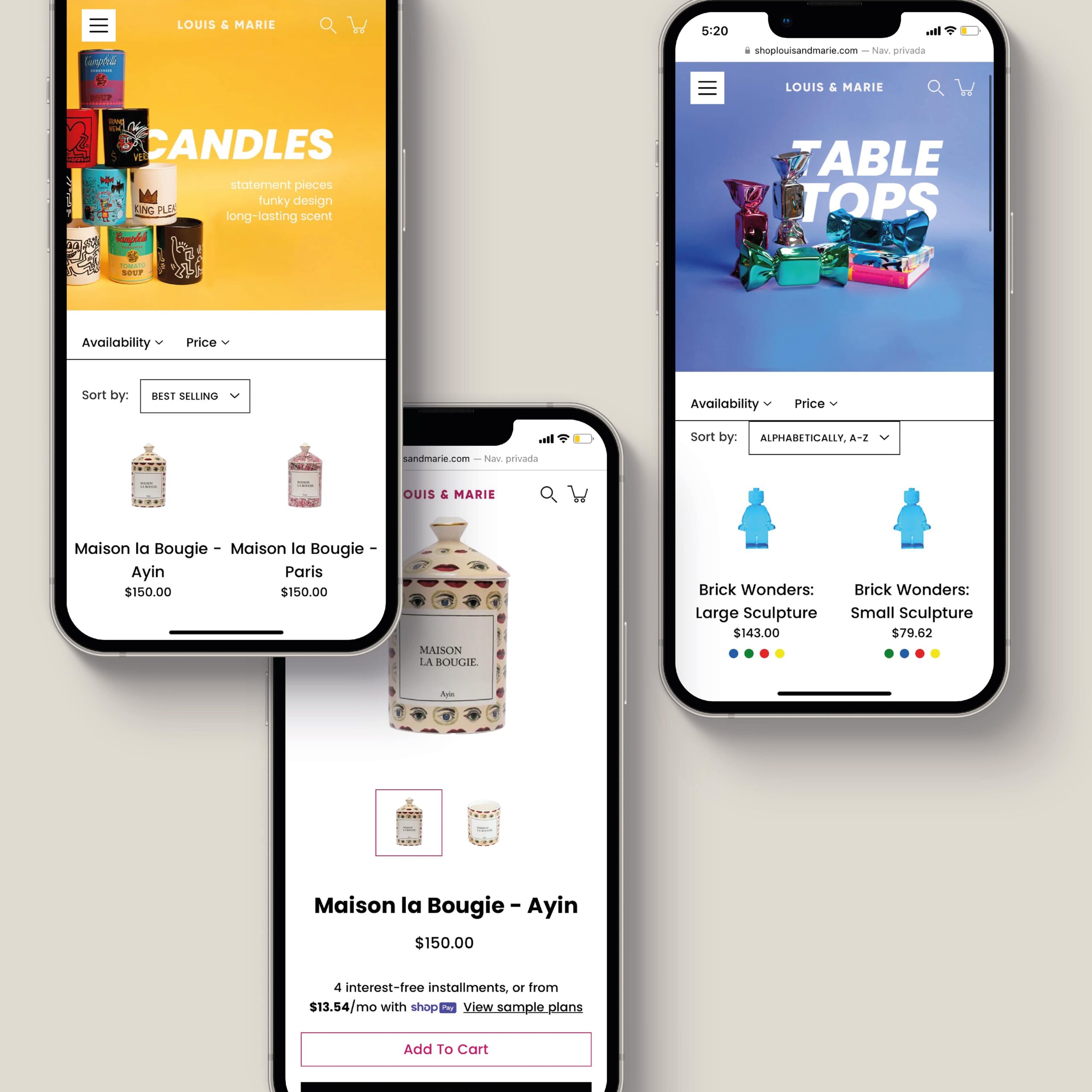16 Dic, 2023
5.59M

Angely Colmenares
The best practices for creating a Brand Identity
Brand identity refers to the collection of visual and textual elements that represent a brand and distinguish it from others in the market. It includes the brand’s logo, colors, typography, imagery, tone of voice, and overall style. Creating a strong brand identity is essential for building brand recognition, establishing brand loyalty, and effectively communicating the brand’s values and personality to the target audience.
Blog Content
Brand Identity are very Important
Practices for creating a Brand Identity:
– Define your brand strategy
– Conduct market research
-Design a memorable logo
-Choose the right colors
-Develop a consistent visual language
-Craft a unique tone of voice
-Create brand guidelines
-Implement across all touchpoints
-Evolve and adapt

The practices for creating a brand identity are very important for several reasons:
1. Brand Recognition
A strong brand identity helps your target audience recognize and remember your brand. Consistent visual elements and messaging increase brand recall and make your brand stand out in a crowded marketplace.
2. Differentiation
In a competitive market, a unique brand identity sets you apart from competitors. It showcases your brand’s personality, values, and offerings, allowing you to carve out a distinct position in the minds of consumers.
3. Emotional Connection
A well-crafted brand identity evokes emotions and connects with your target audience on a deeper level. It helps build trust, loyalty, and a sense of belonging among customers who resonate with your brand’s values and story.
4. Consistency
A consistent brand identity across all touchpoints establishes credibility and professionalism. It ensures that your brand is easily recognizable and reinforces a unified brand experience, whether it’s through your website, social media, packaging, or offline marketing materials.
5. Targeted Communication
A clear brand identity enables you to communicate effectively with your target audience. It guides your messaging, tone of voice, and visual elements, ensuring that your brand’s communication aligns with the preferences and needs of your customers.
6. Brand Loyalty
A well-defined brand identity fosters brand loyalty. When customers have a positive and consistent experience with your brand, they are more likely to become repeat customers and advocates who recommend your brand to others.
7. Business Growth
A strong brand identity positively impacts your business’s growth and success. It helps attract new customers, retain existing ones, and increase brand equity, ultimately leading to higher sales and market share.
The practices for creating a brand identity are crucial for building brand recognition, differentiation, emotional connection, consistency, targeted communication, brand loyalty, and overall business growth.
Practices for creating a Brand Identity

Define your brand strategy
Start by clearly defining your brand’s mission, vision, values, and target audience. Understand what sets your brand apart from competitors and what kind of emotional connection you want to establish with your customers.
Defining your brand strategy is a critical step in establishing a strong brand identity. Here are some key aspects to consider when developing your brand strategy:
1. Brand Purpose
Clearly define the purpose or the “why” behind your brand. Identify the core values, beliefs, and mission that drive your brand’s existence and establish its unique value proposition.
2. Target Audience
Understand your target audience in-depth. Conduct market research to identify their needs, preferences, and behaviors. Define your ideal customer profiles and create buyer personas to guide your brand messaging and communication.
3. Brand Positioning
Determine how you want your brand to be perceived in the market. Identify your brand’s unique selling points and differentiators that set it apart from competitors. Craft a positioning statement that clearly communicates your brand’s unique value to your target audience.
4. Brand Personality
Define the personality and character traits that your brand will embody. Consider how your brand would be described if it were a person. This will help shape the tone of voice, communication style, and overall brand experience.
5. Brand Storytelling
Lorem ipsum dolor sit amet, consectetur adipisi cing elit, sed do eiusmod tempor incididunt ut abore et doDevelop a compelling brand story that resonates with your target audience. Communicate your brand’s history, values, and mission in a way that engages and connects emotionally with your customers. Authentic storytelling can create a strong bond between your brand and its audience.lore magna
6. Brand Visual Identity
Create a visual identity that reflects your brand’s personality and resonates with your target audience. Design a memorable logo, choose appropriate colors, typography, and imagery that align with your brand’s positioning and appeal to your target audience.
7. Brand Voice and Messaging
Establish a consistent tone of voice and messaging that encapsulates your brand’s personality and values. This should be reflected in all forms of communication, including website content, social media posts, advertising campaigns, and customer interactions.
8. Brand Experience
Ensure that every touchpoint with your brand delivers a consistent and positive brand experience. From the website design to product packaging to customer service, every interaction should align with your brand strategy and reinforce its values and promises.
9. Brand Guidelines
Document your brand strategy and guidelines to provide clear direction for internal and external stakeholders. This includes guidelines for logo usage, color palettes, typography, tone of voice, and brand messaging. Consistency is key to building a strong and recognizable brand identity.
Remember, a well-defined brand strategy serves as the foundation for creating a compelling brand identity that resonates with your target audience and differentiates your brand in the market. Regularly review and refine your brand strategy as your business evolves and market conditions change.

Conduct market research
Gain insights into your target audience’s preferences, needs, and aspirations. Understand their demographics, psychographics, and buying behavior to effectively tailor your brand identity to resonate with them.
Conducting market research is a crucial component of developing a strong brand identity. Here’s a strategy for conducting market research to inform your brand identity:
1. Identify Research Objectives
Determine the specific goals and objectives of your market research. Are you looking to understand your target audience, assess market trends, evaluate competitor strategies, or gather insights for product development? Clearly define what you want to achieve through your research.
2. Define Target Audience
Identify the specific demographic, psychographic, and behavioral characteristics of your target audience. This includes factors such as age, gender, location, interests, preferences, and purchasing behavior. Understanding your audience will help tailor your brand identity to their needs and preferences.
3. Choose Research Methods
Select the appropriate research methods to gather the required information. This can include qualitative methods such as focus groups, interviews, and observations, as well as quantitative methods such as surveys and data analysis. Consider using a combination of methods to gain a comprehensive understanding of your market.
4. Develop Research Instruments
Design research instruments, such as questionnaires or interview guides, that align with your research objectives. Ensure that your questions are clear, unbiased, and relevant to gather meaningful insights. Pilot test your instruments to identify any issues before conducting the full research.
5. Collect Data
Implement your chosen research methods and collect relevant data from your target audience, industry experts, and competitors. Ensure proper data management and data protection practices to maintain the confidentiality and integrity of the information collected.
6. Analyze Findings
Analyze the collected data using appropriate statistical or qualitative analysis techniques. Look for patterns, trends, and insights that can inform your brand identity. Identify key themes, customer pain points, and opportunities for differentiation.
7. Apply Insights to Brand Identity
Use the research findings to inform the development or refinement of your brand identity. Determine how your brand can address customer needs, align with market trends, and stand out from competitors. Incorporate the insights into elements like brand messaging, tone of voice, visual identity, and customer experience.
8. Monitor and Adapt
Market research is an ongoing process. Continuously monitor market trends, consumer preferences, and competitive landscape to keep your brand identity relevant and responsive. Regularly evaluate and adapt your brand strategy based on new insights and changing market dynamics.
Market research provides valuable insights to guide the development of your brand identity. It helps you understand your target audience, competitive landscape, and market trends, enabling you to create a brand that resonates with your customers and stands out in the market.

Design a memorable logo
Create a visually appealing and distinctive logo that reflects your brand’s personality and values. Ensure that it is versatile and scalable for different platforms and sizes.
Designing a memorable logo is an important aspect of brand identity. Here’s a strategy to help you create a Good logo that represents your brand effectively
Choose the right colors
Select a color palette that aligns with your brand’s personality and evokes the desired emotions. Different colors have different psychological associations, so choose wisely to convey the right message.
Choosing the right colors for your brand identity is crucial as colors have the power to evoke emotions and convey messages. Here’s a strategy to help you select the right colors for your brand:
1. Understand Color Psychology
Familiarize yourself with the basics of color psychology. Different colors have unique associations and can evoke specific emotions or perceptions. For example, blue is often associated with trust and stability, while red can convey energy and excitement. Consider the emotions and attributes you want your brand to evoke and choose colors accordingly.
2. Consider Your Brand Personality
Reflect on your brand’s personality, values, and target audience. Think about the characteristics and emotions you want your brand to convey. Is it youthful and vibrant? Sophisticated and elegant? Playful and fun? Aligning your color choices with your brand personality will help create a cohesive and meaningful visual identity.
3. Research Industry Standards
Investigate the color palettes commonly used in your industry. While you don’t want to blend in completely, understanding the prevailing color trends can help you differentiate your brand appropriately. Aim for a balance between standing out and fitting into your industry’s visual language.
4. Use Color Wheel Principles
Familiarize yourself with color wheel principles, such as complementary, analogous, and monochromatic color schemes. These principles can guide your color choices and ensure harmonious combinations. Consider using online tools or graphic design software that provide color palette generators based on these principles.
5. Test Color Combinations
Experiment with different color combinations to see how they interact and communicate your brand’s essence. Test the colors in various contexts, such as digital and print applications, to ensure they work well across different mediums. Consider how the colors appear on screens, in print materials, and in different lighting conditions.
6. Accessibility and Cultural Considerations
Ensure that the colors you choose are accessible and inclusive. Consider factors such as color contrast for visually impaired individuals and any cultural associations or connotations of certain colors in different regions or countries. Conduct research or consult with experts to ensure your color choices are appropriate and inclusive.
7. Use Color Psychology in Brand Elements
Apply your chosen colors consistently across various brand elements, such as your logo, website, packaging, and marketing materials. Consistency reinforces brand recognition and helps establish a strong visual identity.
Selecting the right colors for your brand identity requires thoughtful consideration of color psychology, your brand’s personality, industry standards, and accessibility considerations. Take the time to test and refine your color choices to create a visually appealing and meaningful brand identity.

Develop a consistent visual language
Establish guidelines for typography, imagery, and graphic elements that consistently represent your brand across all touchpoints. This ensures a cohesive and recognizable brand identity.
Developing a consistent visual language is essential for building a strong brand identity. It ensures that your brand’s visual elements are cohesive, recognizable, and aligned with your brand personality. Here’s a strategy to help you develop a consistent visual language:
1. Define Brand Guidelines
Start by establishing brand guidelines that outline your brand’s visual elements. This includes specifications for your logo usage, color palette, typography, imagery style, iconography, and any other visual components that represent your brand. Document these guidelines in a brand style guide for easy reference.
2. Create a Distinctive Logo
Design a logo that captures the essence of your brand and serves as the foundation for your visual language. Ensure that your logo is unique, memorable, and versatile to be used across various applications and sizes.
3. Select a Color Palette
Choose a carefully curated color palette that reflects your brand’s personality and resonates with your target audience. Select primary and secondary colors that work harmoniously together and align with your brand attributes. Specify color codes (RGB, CMYK, HEX) in your brand guidelines for consistency in color reproduction.
4. Establish Typography Guidelines
Select fonts that align with your brand’s personality and readability requirements. Choose a primary font for headlines and a secondary font for body text, ensuring legibility across different mediums. Specify font styles, sizes, and spacing guidelines to maintain visual consistency.
5. Determine Imagery Style
Define the style and type of imagery that best represents your brand. Consider factors such as photography, illustrations, graphics, or a combination thereof. Determine whether your brand visuals should be realistic, abstract, minimalistic, or vibrant. Establish guidelines for image selection, editing, and usage to maintain a consistent visual tone.
6. Develop Iconography
Create a set of icons or symbols specific to your brand that can be used consistently across different applications. These icons should align with your brand attributes and provide a visual shorthand for communicating concepts or actions.
7. Design Templates and Layouts
Develop templates and layouts for various brand collateral, such as business cards, letterheads, presentations, social media graphics, and website elements. Ensure that these templates adhere to your brand guidelines, allowing for consistent application of your visual language.
8. Train and Educate
Educate your team, including designers and marketing personnel, on the proper use of your brand’s visual elements. Conduct training sessions or provide resources that familiarize them with the brand guidelines and the rationale behind each visual element. This ensures that everyone involved in creating brand assets understands and follows the guidelines consistently.
9. Regularly Audit and Update
Conduct periodic audits to ensure compliance with your brand guidelines. Monitor the use of visual elements across different channels and rectify any inconsistencies or deviations. Update your guidelines as needed to accommodate changes in design trends or brand evolution.
By developing a consistent visual language, you create a unified and cohesive brand identity that resonates with your audience and reinforces brand recognition. Consistency across all visual touchpoints strengthens your brand’s impact and helps build trust and loyalty among your customers.

Craft a unique tone of voice
Define the personality and tone of voice that your brand will use in its communication. Whether it’s formal, casual, playful, or authoritative, consistency is key to building brand recognition.
Crafting a unique tone of voice is crucial for establishing a distinct brand identity and effectively communicating with your target audience. Here’s a strategy to help you develop a unique tone of voice:
1. Understand Your Brand
Gain a deep understanding of your brand’s values, personality, and positioning. Consider the emotions, values, and attributes you want to convey through your brand’s communication. This understanding will serve as the foundation for developing your unique tone of voice.
2. Define Brand Attributes
Identify the key attributes that define your brand’s personality. Is your brand playful, authoritative, friendly, formal, or innovative? Choose a few core attributes that align with your brand identity and will resonate with your target audience.
3. Know Your Audience
Understand your target audience’s demographics, psychographics, and communication preferences. Consider their language, tone, and cultural references. Tailor your tone of voice to match their preferences and build a connection with them.
4. Develop Voice Guidelines
Create a set of voice guidelines that outline how your brand should sound in its communication. Define specific characteristics, such as the level of formality, use of humor, vocabulary, sentence structure, and overall style. Provide examples and explanations to illustrate the desired tone and voice.
5. Be Consistent
Consistency is key when it comes to tone of voice. Ensure that your brand’s communication across all channels, including website content, social media posts, customer service interactions, and marketing materials, reflects the defined tone of voice. This consistency helps build brand recognition and strengthens your brand identity.
6. Use Storytelling
Incorporate storytelling into your brand’s communication to engage and connect with your audience. Craft narratives that align with your brand values and resonate with your target audience. Tell stories that evoke emotions, inspire, or educate, while maintaining your unique tone of voice.
7. Test and Refine
Continuously test and refine your tone of voice based on audience feedback and market insights. Pay attention to how your audience responds to your brand’s communication and adjust your tone if necessary. Monitor social media conversations, customer feedback, and engagement metrics to gauge the effectiveness of your tone of voice.
8. Train Your Team
Ensure that your team, including customer service representatives, content creators, and marketing personnel, understands and embodies your brand’s tone of voice. Conduct training sessions and provide clear guidelines to ensure consistent implementation across all touchpoints.
9. Evolve with Your Brand
As your brand evolves and grows, periodically revisit and refine your tone of voice. Consider whether your current tone still aligns with your brand’s identity and objectives. Adapt and evolve your tone of voice as needed to stay relevant and resonate with your target audience.
Crafting a unique tone of voice enhances your brand’s personality, strengthens your communication, and sets you apart from competitors. A consistent and authentic tone of voice helps build trust, loyalty, and emotional connections with your audience, ultimately contributing to a strong and memorable brand identity.

Create brand guidelines
Document your brand identity elements, including logo usage, color codes, typography rules, and brand voice guidelines. This ensures consistency in all brand-related communications and collaborations.
Implement across all touchpoints
Apply your brand identity consistently across all customer touchpoints, including your website, social media profiles, packaging, advertising, and customer service. Consistency builds trust and reinforces brand recognition.
Evolve and adapt
Monitor market trends and consumer feedback to ensure your brand identity remains relevant and resonates with your target audience. Adapt and evolve your brand identity as needed to stay competitive.
Developing a strong brand identity requires key strategies that include the development of a consistent visual language, a unique tone of voice, and the creation of brand guidelines. These strategies complement each other to build a cohesive and recognizable brand identity.
Developing a consistent visual language ensures that your brand’s visual elements are cohesive and aligned with the brand’s personality. This is achieved by defining clear visual guidelines that encompass logo design, color palette, typography, imagery style, and icons. Visual consistency reinforces the impact of the brand and helps build trust and loyalty among customers.
Creating a unique tone of voice for the brand is equally important. Defining brand attributes, understanding the target audience, and developing voice guidelines enable consistent and differentiated communication. A unique tone of voice reflects the brand’s personality and creates an emotional connection with the target audience, contributing to a strong and memorable brand identity.
Finally, creating brand guidelines provides a clear and accessible framework for the entire team and external partners to understand and consistently apply the brand’s visual and verbal elements. These guidelines serve as an invaluable reference to ensure consistency across all brand touchpoints and maintain a strong brand identity over time.
By implementing these strategies and following the established guidelines, you will be on the right path to develop a strong and consistent brand identity that stands out in the market, generates trust and loyalty, and establishes a meaningful connection with your target audience.
Related Episodes
1.20 min
episode 02
The sweetest music this side of heaven
1.20 min
episode 02
The sweetest music this side of heaven
Support the show on Elecast
Enjoy listening to our podcast? Consider making a donation!

Leave a Reply